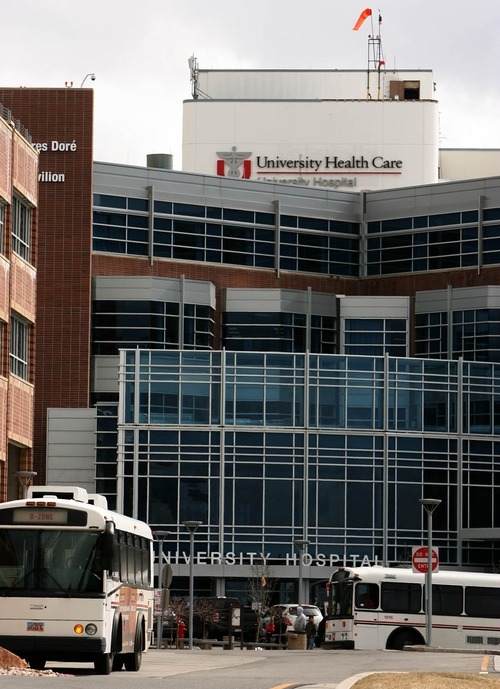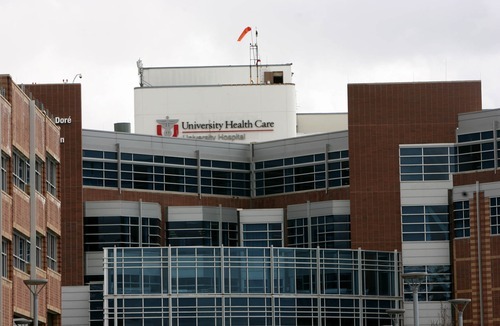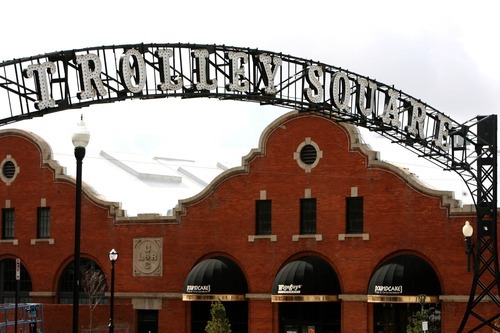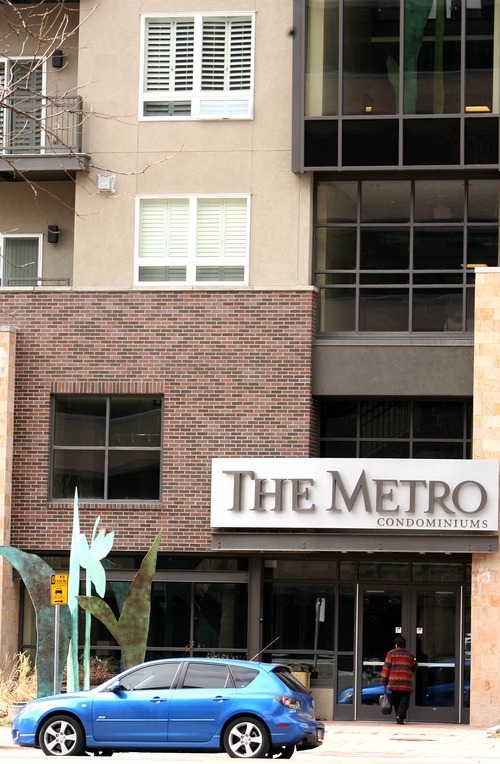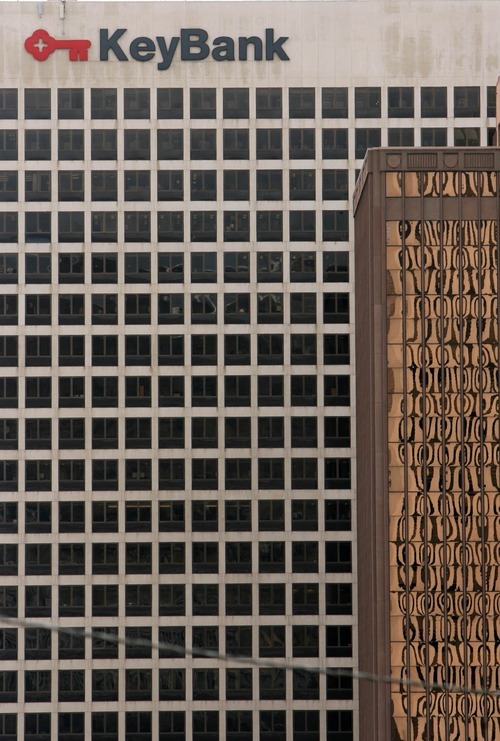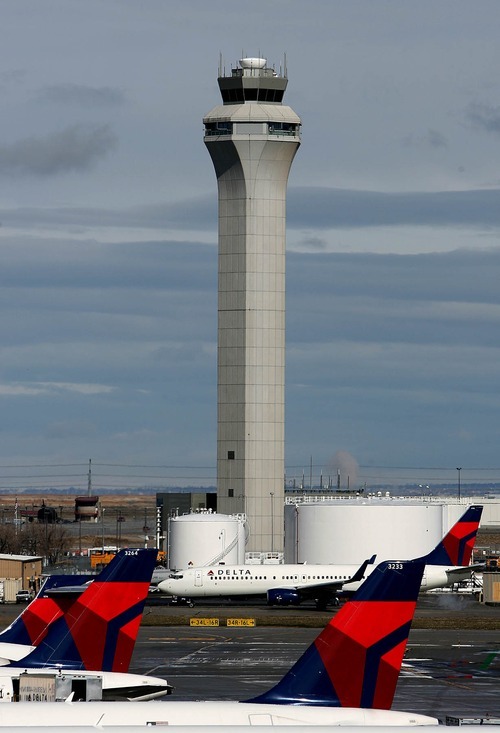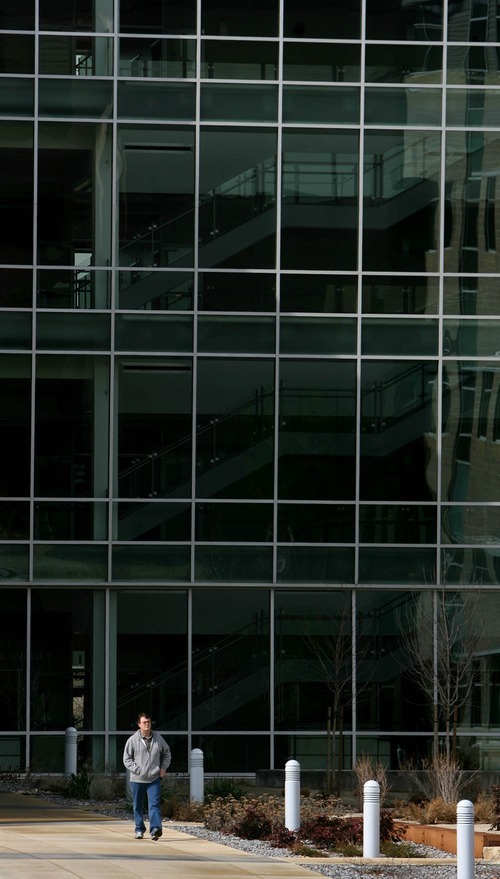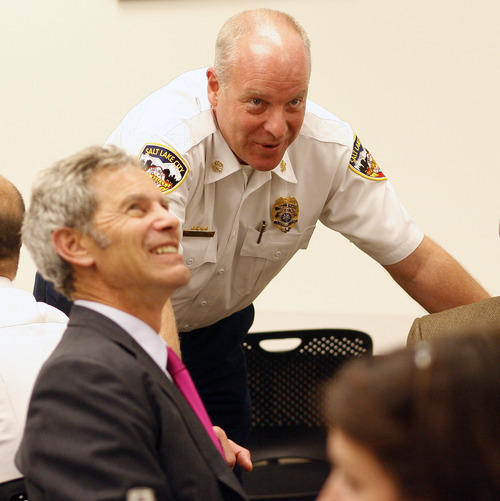This is an archived article that was published on sltrib.com in 2011, and information in the article may be outdated. It is provided only for personal research purposes and may not be reprinted.
There was no "wolf" in the hills above Salt Lake City — not when rescuers received the first warning, not when they responded to the second or third or fourth or even 12th.
And yet, the Salt Lake City Fire Department continued to roll engines through Utah's capital to reach a secluded Arcadia Heights mansion, where fire alarms soon resembled a "Boy Who Cried Wolf" chase.
Firefighters answered the east-bench estate's calls a dozen times last year. And each time, the call turned out to be false.
In all, city firefighters responded to more than 2,400 false fire alarms last year, according to a Salt Lake Tribune analysis of emergency dispatch logs obtained through an open-records request. Burned popcorn and bad cooking sparked some of them. Chronically faulty alarms caused others. (to see an interactive map, go to http://bit.ly/hbDS6L).
Salt Lake City International Airport tripped the most false alarms (almost 100). But places such as University Hospital, the Citifront apartments and even the Dodo Restaurant in Sugar House also ranked among the city's top 20 call generators.
"We take every alarm seriously," Fire Chief Kurt Cook said. "We would never assume that anything is false."
Consequently, firefighters are rushing unnecessarily from their stations. Those responses cost taxpayers (think about the personnel, equipment and fuel needed to roll engines to thousands of calls). They disrupt traffic (think vehicle safety when putting firetrucks with lights and sirens on busy streets). They leave stations less prepared (think how much longer it could take for firefighters to reach real emergencies).
Firefighters don't gripe about alarms tripped for legitimate reasons, even if they turn out to be false. If a smoke detector blares because of burnt toast, the system worked. What irks firefighters are alarms caused by faulty systems.
Cook will introduce a proposed ordinance this month that would impose the city's first-ever fee on businesses and organizations that fail to properly maintain their alarm systems. The rules would apply to hard-wired systems that notify authorities automatically after being tripped.
The proposal isn't about money, he insists, it's about deterrence.
Although the proposed fee would affect only a portion of the city's overall false alarms — TheTribune identified 557 calls (or nearly 23 percent) that were linked to malfunctions — Cook hopes to send a powerful message to building owners who would not take care of their systems otherwise.
Under the proposal, the city would respond to the first two malfunctions for free. After that, businesses would get a bill. The third false alarm would cost $125, followed by $250 for the fourth, $375 for the fifth and $500 for the sixth or more.
The base $125 fee, Cook said, would not cover the actual cost of a call-out, but it could serve as a meaningful deterrent. These charges would not apply to alarms triggered for real reasons — whether a sudden drop in water pressure in a sprinkler system or steam in the kitchen.
"We are not trying to penalize anybody," Cook said. "We are simply trying to draw attention to the problems [building owners and alarm companies] have with their systems. We would appreciate them addressing their problems."
The Fire Department suggests that the measure could generate $50,000 to $75,000 a year. That's not too far off from The Tribune's findings, which showed malfunction-related alarms in 2010 would have produced at least $43,500.
The idea resonates with Jack Parow, president of the International Association of Fire Chiefs, who said similar ordinances are becoming "commonplace" across the nation. His own department in Chelmsford, Mass., imposed a fee and saw false alarms plunge.
"Anytime you can keep your firefighters where they belong — as opposed to running to an alarm they shouldn't be running to and putting people's lives in danger — that is a good thing," Parow said.
Malfunction or not, false alarms have an impact on Salt Lake City's resources.
The Fire Department responds to about 30,000 calls a year. Most of those (80 percent) are medical emergencies. The rest are for fires. That means fire alarms account for about 6,000 calls. Of those, 40 percent are false.
False alarms are so frequent that there was only one day last year — Jan. 30 — when firefighters didn't respond to at least one false call. On average, the department answered six or seven of them a day.
The airport — with more than 300 tenants, 8,000 acres and two dedicated firehouses — turned out to be the biggest offender in 2010 with 95 calls, The Tribune's analysis showed. Seventy of those calls were due to system malfunctions.
Although each of those calls came from the airport (they are listed under three generic addresses along Terminal Drive), spokeswoman Barbara Gann said the airport itself isn't entirely to blame. They came from numerous sources and tenants on airport grounds. Gann said recent TRAX line construction also contributed to a higher-than-average call volume last year. She expects those numbers to decline once that construction ends.
High on the false-alarm list were several not-so-surprising entities with large facilities, expansive campuses or ongoing construction.
For example, University Hospital had 42 calls to a health sciences complex that covers nearly 3 million square feet. Eleven of those came from a construction site near the College of Nursing.
The newly renovated LDS Hospital had 36 calls last year to its main building and a neighboring physicians complex. Spokesman Jess Gomez pinned most of the false calls on, again, construction.
Atower near the City Creek Center project downtown had 10 call-outs.
"We're always supportive of efforts to improve public safety," City Creek Reserve spokesman Dale Bills said. "Responding to false alarms due to system malfunctions is a drag on limited fire-safety resources.…As construction winds down, the false alarms will be reduced."
The Tribune analysis found some less predictable buildings, too:
Firefighters responded 11 times to the Dodo Restaurant in Sugar House (power outages kept triggering the alarm), 14 times to the Emeritus assisted-living center on 500 East (cooking-related factors such as steam or smoke caused many of those incidents) and 14 times to a residential drug and alcohol treatment center on South Temple (the system had been installed improperly).
TheTribune also found troubles among several large apartment complexes. Metro Condominiums near City Hall had 19 false alarms, the Irving Schoolhouse Apartments in Sugar House had 17, Bonneville Tower Condominiums on South Temple had 16, and the Garden Apartments near the LDS Conference Center had 15.
The Fire Department's effort to extinguish some of those alarms comes three months after flames destroyed the historic Provo Tabernacle. Because the tabernacle's alarm system had been prone to false calls, a security officer disabled it after finding no sign of an intruder or emergency.
Less than two hours later, the 127-year-old landmark was ablaze. By the time firefighters arrived, the ceiling had started to collapse. Rather than risk being trapped, crews had to retreat and pump in water through the windows.
Although a high-profile reminder of the consequences of crying "wolf," the Provo Tabernacle wasn't the spark for Salt Lake City's proposed ordinance. Cook raised the issue last spring during a particularly painful budget cycle. The city was cutting its ledger bone-deep — so deep that cost-saving measures included mowing lawns less frequently, planting fewer flowers and eliminating jobs.
Cook suggested that a charge on malfunctioning fire alarms — which he considers a prudent deterrent for companies that sometimes need a "stronger approach to gain compliance" — would generate up to $100,000 a year. He had planned to bring back the proposal by year's end, but ended up devoting more study to the issue.
Now a draft ordinance is ready to take to the City Council. Cook declined to release a copy.
Four of Utah's most-populous cities — Layton, Orem, Provo and West Jordan — already have similar ordinances to punish repeat offenders.
But even though some cities can impose a fee, they rarely do. In West Jordan, firefighters can charge companies up to $160 after the third malfunction. But Battalion Chief Ron Larsen can't remember ever assessing it.
Layton Fire Marshal Dean Hunt estimates that he has sent out three bills during his 14-year tenure. (The Davis County city's fee is based on a sliding scale that tops out at $100.) Hunt sees it as a tool to prod companies to fix, or maintain, their alarms.
"It gives them a little more incentive to get it taken care of," he said.
Ogden urges compliance without enforcing a city ordinance. If a "stick" is needed, officials turn to the state-adopted International Fire Code, which characterizes nuisance alarms as misdemeanor offenses.
"I cannot recall a time when someone has been unwilling to take care of [a problem]," Deputy Fire Chief Greg Chamberlain said. "The city is generally not interested in imposing a dollar burden on anyone. They just want to get it corrected."
That's what Cook wants, too.
"This is not about generating revenue," he said. "This is about reducing false and nuisance alarms."
But Salt Lake City may have to send that message to businesses, first, through their pocketbooks.
Of interest: False fire alarms
No false alarms • There was only one day last year — Jan. 30 — when Salt Lake City firefighters didn't respond to a false alarm. The average daily number of false calls was between six and seven.
Worst month • The record month for false alarms was in August, when firefighters responded to 259 calls. The department received 74 calls in one seven-day period during that month, averaging more than 10 a day between Aug. 14 and Aug. 20.
Time of day • False alarms happen most frequently in the morning. A third of the calls came in between 9 a.m. and 1 p.m., compared with 12 percent between 9 p.m. and 1 a.m.
Busiest period • During eight days last year, crews received more than 14 false alarms in a 24-hour period. On two days, there were 20 or more.
Worst day • The worst day of the year for false fire alarms was March 30, when the department responded to 21 calls. Those calls came steadily from 5:15 a.m. to 9:55 p.m. and included five alarms at five separate locations between 7:24 p.m. and 7:43 p.m.
Source: Salt Lake Tribune research —
By the numbers
30,000 • Emergency calls the Salt Lake City Fire Department receives each year.
6,000 • Number of calls for fire-related emergencies. The rest of them are for medical reasons.
$125 • Minimum amount the city would charge a business that has three or more false alarms in a year because of a system malfunction, under a proposed ordinance.
40 • Percent of fire calls that turned out to be false in 2010. There were 2,431 false alarms last year, 557 of which were linked to system malfunctions.
1 • Day when firefighters didn't respond to a single false alarm last year (Jan. 30).
Source: Salt Lake Tribune research


